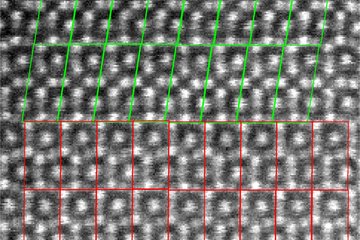All genres
41.
Journal Article
Oxygen evolution activity and stability of iridium in acidic media. Part 1. – Metallic iridium. Journal of Electroanalytical Chemistry 773, pp. 69 - 78 (2016)
42.
Journal Article
On the origin of the improved ruthenium stability in RuO2 - IrO2 mixed oxides. Journal of the Electrochemical Society 163 (11), pp. F3099 - F3104 (2016)
43.
Journal Article
Oxygen and hydrogen evolution reactions on Ru, RuO2, Ir, and IrO2 thin film electrodes in acidic and alkaline electrolytes: A comparative study on activity and stability. Catalysis Today 262, pp. 170 - 180 (2016)
44.
Journal Article
Pt Sub-Monolayer on Au: System Stability and Insights into Platinum Electrochemical Dissolution. Journal of the Electrochemical Society 163 (3), pp. H228 - H233 (2016)
45.
Journal Article
Platinum recycling going green via induced surface potential alteration enabling fast and efficient dissolution. Nature Communications 7, 13164 (2016)
46.
Journal Article
The Stability Challenge on the Pathway to Low and Ultra-Low Platinum Loading for Oxygen Reduction in Fuel Cells. ChemElectroChem 3 (1), pp. 51 - 54 (2016)
47.
Journal Article
On the need of improved Accelerated Degradation Protocols (ADPs): Examination of platinum dissolution and carbon corrosion in half-cell tests. Journal of the Electrochemical Society 163 (14), pp. F1510 - F1514 (2016)
48.
Journal Article
Molecular Insight in Structure and Activity of Highly Efficient, Low-Ir Ir-Ni Oxide Catalysts for Electrochemical Water Splitting (OER). Journal of the American Chemical Society 137 (40), pp. 13031 - 13040 (2015)
49.
Journal Article
Dissolution of Platinum in Presence of Chloride Traces. Electrochimica Acta 179, pp. 24 - 31 (2015)
50.
Journal Article
The Effect of the Voltage Scan Rate on the Determination of the Oxygen Reduction Activity of Pt/C Fuel Cell Catalyst. Electrocatalysis 6 (3), pp. 237 - 241 (2015)
51.
Journal Article
Dissolution of Platinum in the Operational Range of Fuel Cells. ChemElectroChem 2 (10), pp. 1471 - 1478 (2015)
52.
Journal Article
Numerical Simulation of an Electrochemical Flow Cell with V-Shape Channel Geometry. Journal of the Electrochemical Society 162 (12), pp. H860 - H866 (2015)
53.
Journal Article
Stability of nanostructured iridium oxide electrocatalysts during oxygen evolution reaction in acidic environment. Electrochemistry Communucations 48, pp. 81 - 85 (2014)
54.
Journal Article
Sustainable generation of hydrogen using chemicals with regional oversupply - Feasibility of the electrolysis in acido-alkaline reactor. International Journal of Hydrogen Energy 39 (29), pp. 16275 - 16281 (2014)
55.
Journal Article
Coupling of a scanning flow cell with online electrochemical mass spectrometry for screening of reaction selectivity. Review of Scientific Instruments 85 (10), 104101 (2014)
56.
Journal Article
Hierarchical nanoporous films obtained by surface cracking on Cu–Au and ethanethiol on Au(001). Electrochimica Acta 140, pp. 352 - 358 (2014)
57.
Journal Article
Dissolution of noble metals during oxygen evolution in acidic media. ChemCatChem 6 (8), pp. 2219 - 2223 (2014)
58.
Journal Article
Temperature-dependent dissolution of polycrystalline platinum in sulfuric acid electrolyte. Electrocatalysis 5 (3), pp. 235 - 240 (2014)
59.
Journal Article
The impact of dissolved gases on platinum dissolution in acidic media. Electrochemistry Communucations 40, pp. 49 - 53 (2014)
60.
Journal Article
Rational design of the electrode morphology for oxygen evolution - enhancing the performance for catalytic water oxidation. RSC Advances 4 (19), pp. 9579 - 9587 (2014)











